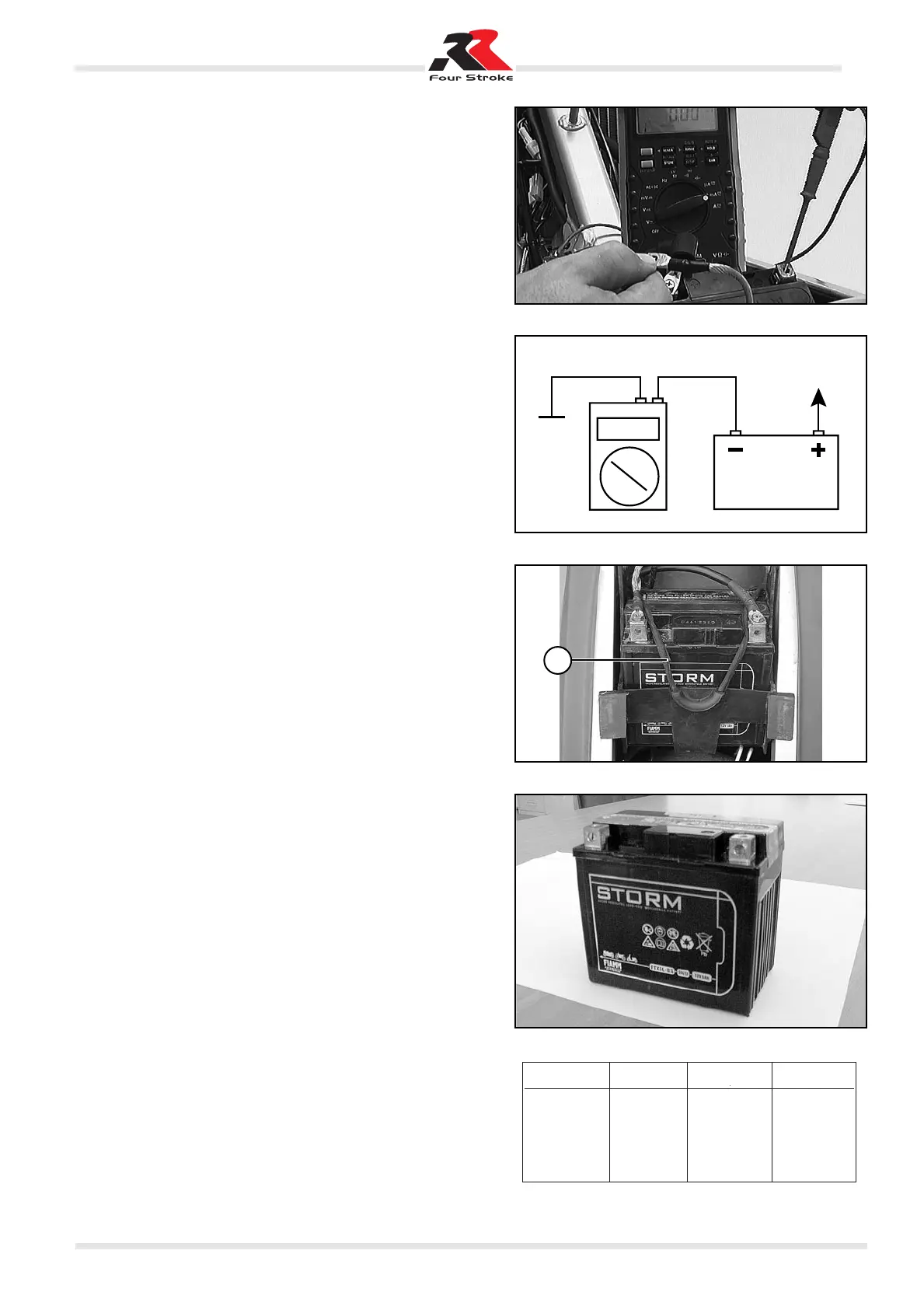Checking for leakage currents
Check for leakage currents before inspecting the regulator-rec-
tifier.
– Disconnect the ignition and remove the earth cable from the
battery.
– Connect and ampere meter between the earth cable and the
negative terminal of the battery.
Nominal value: max. 1 mA
– If the actual value exceeds the nominal value, proceed to
check the various users.
Possible malfunctions include:
• A faulty regulator-rectifier.
• A faulty capacitor.
• Leakage currents in the connectors, the ignition switch or the
starting relay.
Removing and reinstalling the battery
– Remove the saddle.
– Disconnect the negative terminal first and then the positive
terminal from the battery.
– Release elastic band 1 and remove the battery from the bat-
tery holder.
– When reinstalling the battery, first connect the positive termi-
nal and then the negative terminal.
WARNING: TO PREVENT POSSIBLE LEAKAGE OF ACID, BE
SURE TO POSITION THE BATTERY TERMINALS AT THE
FRONT.
Charging the battery
– Remove the battery and measure its charge. Use a voltmeter
to measure the voltage between the battery terminals (voltage
at rest). Maximum tolerance of measuring instrument: 1 per
cent.
– To obtain a correct measurement, do not charge or discharge
the battery for at least 30 minutes before performing the ope-
ration.
– If the battery charge cannot be determined, the battery can be
charged for a maximum of 10 hours with 0.5 amperes and a
maximum of 14.4 volts.
IMPORTANT:
– NEVER REMOVE THE BATTERY PLUGS.
– TO RECHARGE THE BATTERY, FIRST CONNECT THE
BATTERY TO THE CHARGER AND THEN TURN ON THE
CHARGER.
– IF THE BATTERY IS CHARGED INDOORS, TAKE CARE TO
ENSURE PROPER VENTILATION. DURING THE CHARGE
THE BATTERY PRODUCES EXPLOSIVE GASES.
– IF THE BATTERY IS OVERCHARGED, OR IF THE CHAR-
GING VOLTAGE IS EXCESSIVE, THERE MAY BE AN OUT-
FLOW OF ELECTROLYTE THROUGH THE SAFETY VAL-
VES, WHICH WOULD CAUSE THE BATTERY TO LOSE
PART OF ITS CAPACITY.
